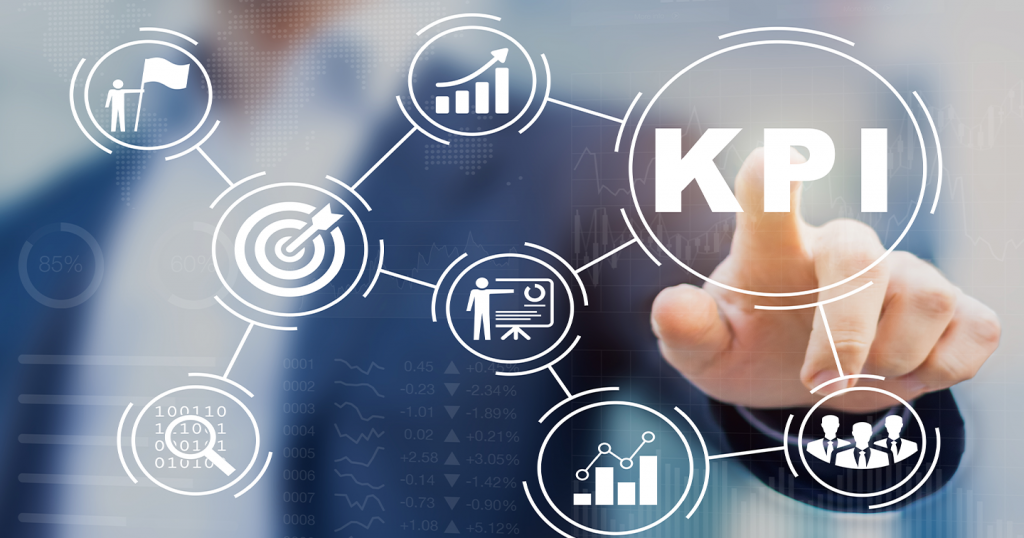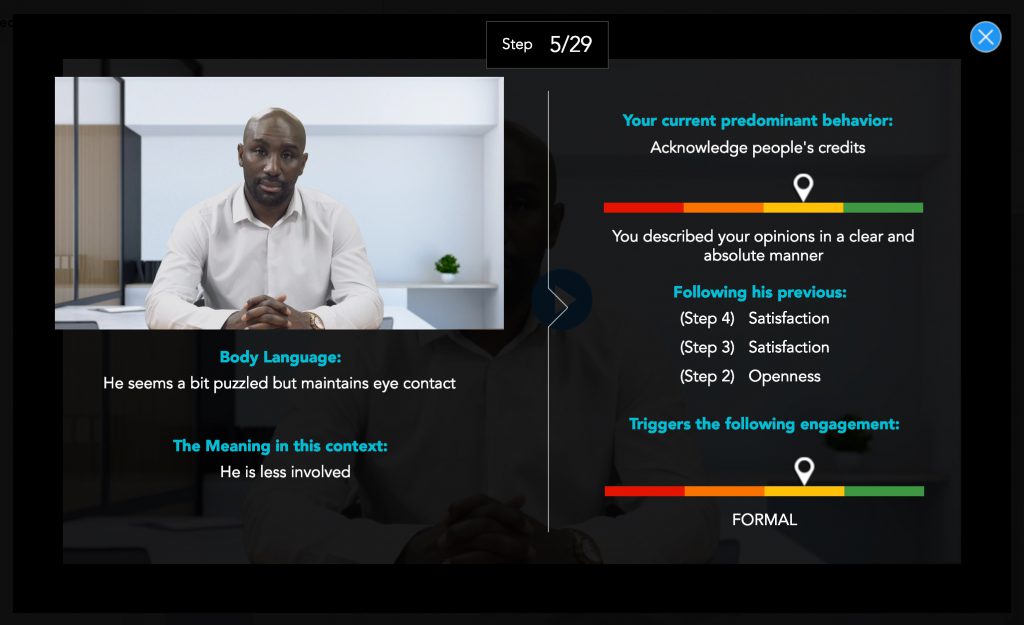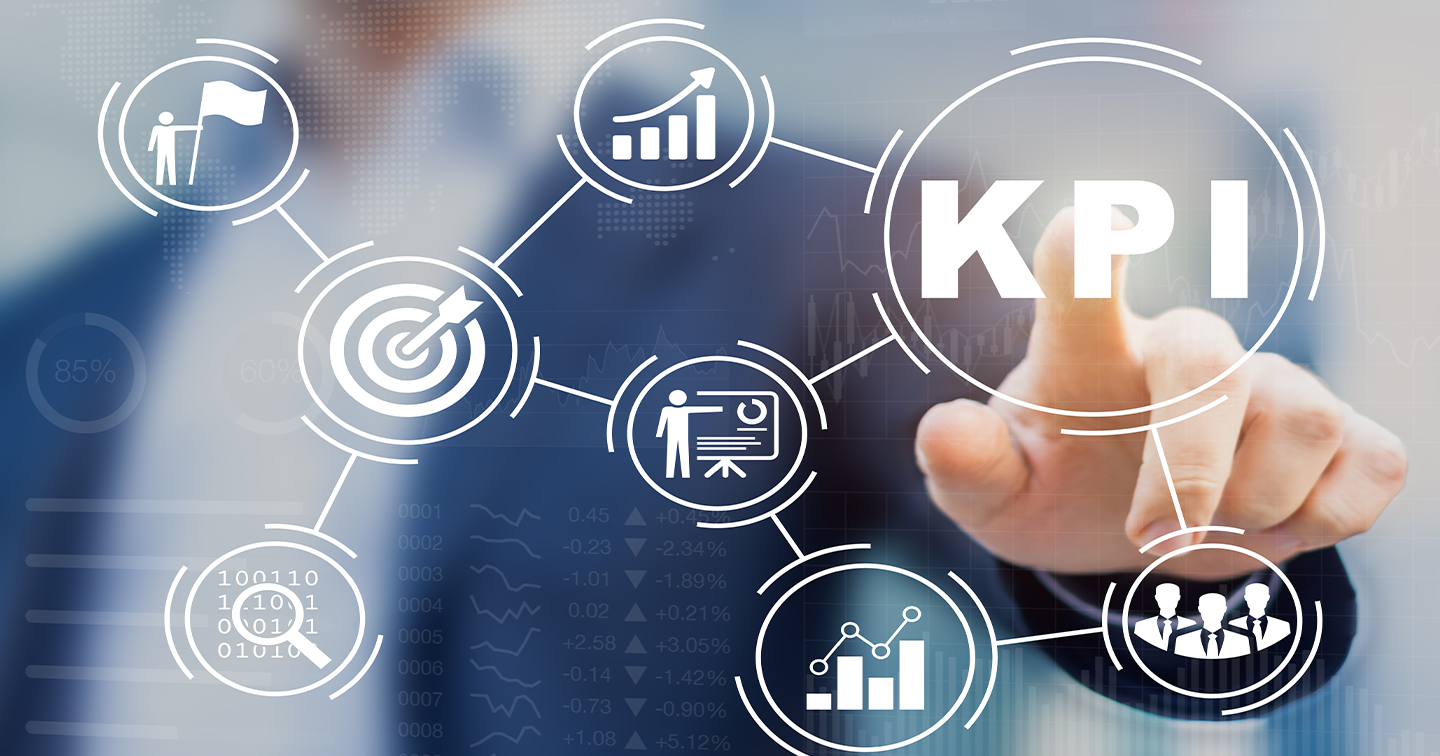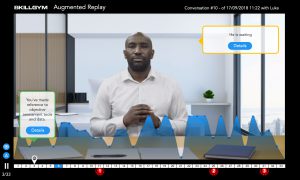
(Just in case…here “From Critical to Empowering Conversations: Let’s Change the World Using the C-FACTOR” I talk about why Critical Conversations are Leaders’ most important area of improvement; here “Building a Community of Leadership Abundance” I provide you some interesting evidence about the role of practicing to improve conversational performance; and here “Digital Role Plays, the Best Way to Develop Conversational Leadership” I give you a checklist for selecting your next Digital Role Play platform).
Today I want to take a deeper look at the different ways Leaders can actually learn from such a practical digital experience. In fact, several researches underline the importance of combining at least four different strategies to improve a behavior:
- The self-awareness of the cause-effect relationship of one’s own behaviors
- The positive reinforcement of optimal behaviors, through recognition and feedback
- Rehearsal of the new behavior, through practice
- The continuous measurement of performance KPIs, highlighting the improvement trend
Here at SkillGym, we have done extensive research over the last 10 years and we have embraced some of the most important learning theories (“Learning Theories Support SkillGym Methodology”) ever developed to shape our methodology.
We have done a lot of experimenting to tweak our recipe, based on the learning experience of hundreds of thousands of Leaders around the world who have practiced on our Digital Role Plays.
This way, we have built upon the above four recommended strategies by developing eight different and exclusive learning triggers that work together and help Leaders make the best of their immersive and interactive sessions in SkillGym:
- The counterpart body language
- The counterpart emotional reactions
- Objective measurement
- Emotional feedback
- The acquisition of a communication process
- The challenge to achieve smart goals
- The possibility to critically review the performance
- The Deja-vu trigger
Self-paced learning benefits from the combination of these triggers: trainees activate both the rational and the emotional learning mechanisms, experiencing the best value in terms of improvement in confidence and self-awareness about their skills in Critical Conversations.
At the same time, many executive coaches around the world deliver more powerful questions in analyzing the evidence delivered by the extensive metrics available in SkillGym. This way, assigning Critical Conversation practice in between coaching sessions is not only a way to boost the practice, it literally becomes a way to have crystal clear evidence of conversational behaviors to discuss at the next session (if you are an Executive Coach, you may be interested in attending this free master class on this subject).
Let’s analyze each of these precious sources of improvement.
Some of them are designed to trigger the trainee before the conversation starts, some work during the conversation and some are available at the end of the conversation. However, as you will read below, some of the triggers work well along the entire experience.
I don’t list here any additional tutor-led trigger (there are many) that our clients continuously add to their recipe of delivering SkillGym, such as the possibility of discussing face to face a specific conversation’s outcome or the many learning materials that can be associated to the practical exercise.
The counterpart body language and emotional reactions
We know that one of the most challenging skills to develop is that of reading the other persons’ body language and hidden emotions during the development of a Critical Conversation.
One of the reasons is that multiple senses come into play here.
You have to listen with your ears and watch with your eyes. The tactile sense is also involved sometimes.
And of course, you need to be able to recognize the subtle signals of non-verbal communication that change according to the type of person you are facing.
And finally, you need to be able to instantly associate those signals to the specific and dynamic context you are in and react accordingly. Easy? Of course not.
SkillGym helps in three ways and in three consequential moments of the exercise.
Before the conversation starts, the trainee has the possibility to study the personality of the character, including the way that this type of personality deals with nonverbal communication.
During the conversation, with smart usage of video shooting technique: close-ups are widely used to underline those emotional peaks coming with non-verbal communication.
After the conversation, the Augmented Replay lets the trainee analyze every single step of the conversation (highlighting the most significant ones) and review the body language of the other person with clear indications about the meaning in the specific context and what lead there.

The benefit of these two learning triggers is very valuable: learning to understand other people’s body language and hidden emotions through consistent practice as well as guided aid is the fastest (and more enjoyable) way to improve. Improving on these two elements is paramount to mastering successful conversations and growing in leadership.
Objective measurement and emotional feedback
Measuring soft skills is not easy. Measuring the impact of soft skills on the other person’s reactions is even more challenging. However, what you don’t measure, you don’t improve and most of the time the result of our Critical Conversation is very different from what we planned and from what we expected at the end of the conversation, as imagined from our own individual blind spot.
Improving without feedback and objective measures is very hard since these triggers work in our favor as eye-opener and accelerators of growth.

At the same time, up to 50 specific key performance indicators (including confidence, self-awareness, strategy and down to the single behaviors applied during the conversation) get measured.
On top of that, trainees can access their personal dashboard where improvements are tracked, and interesting benchmark indications are provided.
The benefit of measuring and triggering both sides of our brain is huge. Learning speeds up and the entire effort acquires a much deeper meaning.
Also, trainers can better target their support-oriented efforts and supervisors have access to significant ROI metrics showing the value of the training experience.
The acquisition of a communication process
Learning to master Critical Conversations goes through the acquisition of a series of techniques related to the process of communication. Each type of conversation has a peculiar structure, a sequence of intermediate objective to achieve and a preferred strategy to achieve the result.
SkillGym helps Leaders to prepare each conversation in a structured way, presenting the goal, the character, the sequence of intermediate objectives and the recommendations on the most suitable strategy.
At the end of each conversation, all these elements get measured and during the Augmented Replay they can be analyzed in deep detail.
All the conversations inside SkillGym are designed based on the most reputed leadership theories and models and can even be personalized to your organization’s culture and best practices.
The benefit of developing a strong and structured backbone to approaching conversations is of course that of growing more aware Leaders that can achieve better results with greater flexibility in a broader range of conversational contexts.
Moreover, the possibility to adapt the structure of a specific type of conversation to your own corporate culture makes SkillGym a great companion to your leadership training programs.
The challenge to achieve smart goals
The energy we put in our learning efforts is influenced by the perception we have about the type of challenges and the goals we are after. The more compelling and rewarding, the higher the energy and the commitment.
SkillGym offers the possibility to set a specific goal for each of the over 50 different KPIs available in the system, so that you can choose what type of achievement you want your trainees to go after.
The possibility to set up in few clicks one internal challenge, with a real-time leaderboard showing the result of the challenge is often a good way to increase participation through well tested gamification techniques.
They are a benefit for the trainees in setting goals, since they can measure themselves against compelling challenges and there is a benefit for trainers too, since higher and clearly stated goals bring higher achievements faster and with much more solid commitment.
The possibility to critically review the performance
One of the biggest problems in reflecting on a past conversation, whether it is a self-reflection or a discussion with a tutor or an executive coach, is that we completely lose the evidence of what really happened.
So, it becomes quite frequent to picture in front of us a biased version of facts and build upon that a distorted analysis that, inevitably, leads to incorrect conclusions.
Instead, having the possibility to review what happened would generate a great deal of stimuli to comprehension and self-awareness development. Not to mention the increase in quality of any tutor-led discussion.
SkillGym provides Augmented Replay, a tool totally integrated in the system that is designed to review any past conversation from a third-party point of view.
Additional hints are provided through augmented reality and the possibility to browse back and forth, stop and play and zoom into several behavioral details make it the best way to develop self-awareness and to discuss based on clear evidence.
The benefit of being able to step back and review one’s own conversation from the outside is that we can actually see how things happened without being trapped inside our small direct vision.
The availability of such powerful tool allows for the development of advanced training and coaching strategies where the tutors and the coach can help the trainees on demand in live sessions or from remote, focusing on what really made the difference and is worth discussing.
The Deja-vu trigger
The learning trigger I prefer in SkillGym is what we call the “Deja-vu effect”. Certainly, you have experienced deja-vu in your life. It’s the perception of a situation that you feel you experienced before and are strangely connected to what is happening now in front of your eyes.
One recent Scottish study by Akira O’Connor shows how our brain uses deja-vu to control the memories stored along the way.
According to another study by Anne Cleary, “Deja-vu can be driven by an unrecalled memory of a past experience that relates to the current situation, with the evidence of memory-based predictive ability during deja-vu states. Deja-vu did not lead to the ability to predict the next turn in a navigational path resembling a previously experienced but un-recalled path (although such resemblance increased reports of deja-vu). However, deja-vu states were accompanied by increased feelings of knowing the direction of the next turn”.
SkillGym offers the possibility to repeat the same conversation several times and every time to experience different nuances generated by the AI algorithm influencing the real time flow of the conversation. At the same time, the same type of behavior can be practiced in different scenarios, with different types of persons and goals.
All this leads to extensive experience being stored in a very short time and with little effort.
The result and the benefit for the trainee is fantastic with much more experiences in such a little time allow the activation of many more deja-vu effects that come to mind in real life when similar situations happen.
The feeling of a higher confidence -connected to the “I was here before, I know what expect”- is one of the elements contributing to faster and higher development of confidence in the conversational skills.
Practice is development
Imagine how much faster and smarter your Leaders can grow their skills, gain confident self-awareness and experience in Critical Conversations by practicing in a Digital Role Play system like SkillGym, providing up to eight different learning triggers of this kind.
You may now be interested in trying the power of SkillGym. Click here to book your 1-hour discovery call.
Please, also peruse our website. There are plenty of inspiring pre-recorded webinars and articles.
Of course, we would be delighted to continue this conversation with you; simply book a discovery call with us here.


